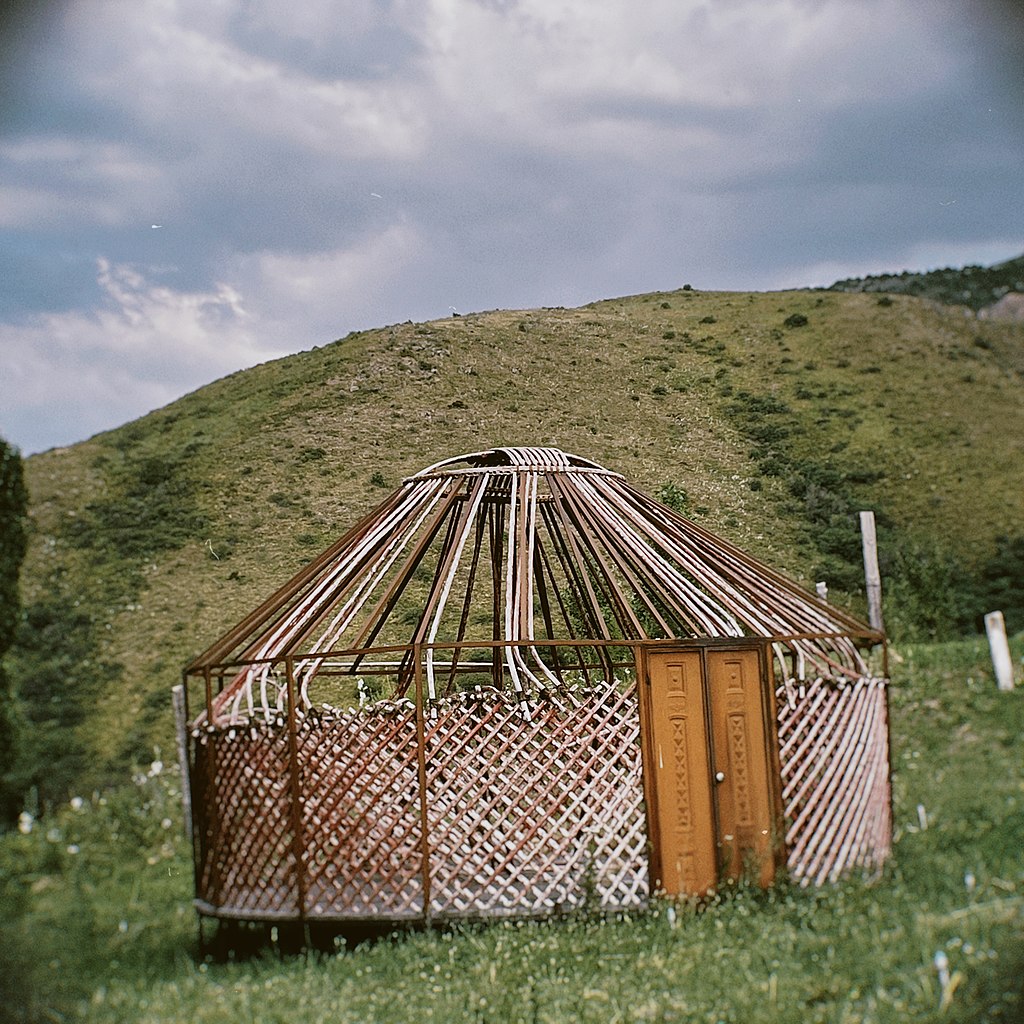
A yurt, rooted in the rich nomadic traditions of Central Asia, is a unique and versatile dwelling that has captivated the imaginations of many seeking a harmonious blend of tradition and modern living.
This circular tent, characterized by its sturdy wooden frame and distinctive felt or canvas covering, has become a symbol of sustainable and eco-friendly living.
Originating from the steppes of Mongolia, yurts have transcended their nomadic roots and gained popularity around the world for their simplicity, mobility, and connection to nature. As interest in environmentally conscious living grows, the yurt has emerged as a compelling alternative to conventional housing, prompting us to explore its ecological impact in this discussion on whether yurts are truly eco-friendly.

The construction of a yurt is a testament to the ingenuity of nomadic communities that have relied on these portable dwellings for centuries. At the heart of a yurt is its wooden lattice frame, typically crafted from locally sourced and sustainable materials. This lattice forms the skeleton of the structure, providing both strength and flexibility. The outer covering, traditionally made from felt or canvas, wraps around the frame, creating a snug and weather-resistant enclosure.
The ingenious design allows for easy assembly and disassembly, making yurts not only practical for a nomadic lifestyle but also eco-friendly in their minimal environmental impact. As we delve into the construction details, we uncover a harmonious marriage of tradition and functionality, reflecting a sustainable ethos that continues to resonate in contemporary discussions on responsible living.\
Read more: https://silkroadyurts.com
The eco-friendliness of a yurt stems from its construction, design, and lifestyle it promotes. Here are key aspects highlighting why yurts are considered environmentally friendly:
The construction of a yurt relies on locally sourced and sustainable materials. The primary component, the wooden lattice frame, is sometimes crafted from renewable wood, minimizing the ecological impact associated with construction. This sustainable material choice reflects a commitment to responsible resourcing.
Yurts exhibit a minimal impact on the environment during both assembly and disassembly. Their design facilitates easy setup and breakdown, leaving little trace on the landscape. This aligns with the “leave no trace” principle, contributing to sustainable building practices and reducing long-term environmental effects.
The circular design of yurts is conducive to natural ventilation, reducing the need for artificial cooling. Moreover, the structure allows for effective passive solar heating, harnessing sunlight for warmth. These design features enhance energy efficiency, resulting in a smaller carbon footprint compared to conventional homes.
Inherent to yurts is their mobility, enabling a nomadic lifestyle with lower resource demands. The ability to relocate reduces the environmental impact on a specific location, allowing ecosystems to regenerate. This mobility aligns with sustainable living principles, emphasizing adaptability and reduced ecological disruption.
Yurts are typically smaller than traditional homes, encouraging a more minimalist lifestyle. This limited space promotes conscious consumption and a reduction in overall resource usage. By embracing a smaller ecological footprint, yurts advocate for a sustainable approach to living.
Yurts can seamlessly integrate with renewable energy sources, such as solar panels or small-scale wind turbines. This adaptability facilitates off-the-grid living, diminishing reliance on non-renewable energy sources. By incorporating renewable energy, yurts contribute to a cleaner and more sustainable energy landscape.
The open design of yurts fosters a closer connection to nature. Large windows and the circular layout maximize natural light, reducing the need for artificial lighting during the day. This connection encourages an appreciation for the environment and promotes sustainable practices that align with the natural rhythms of day and night.
Modern adaptations of yurts often incorporate eco-friendly innovations. From the use of sustainable insulation materials to the implementation of rainwater harvesting systems, these innovations enhance the overall environmental performance of yurts. This adaptability showcases a commitment to staying abreast of eco-friendly advancements within the construction and housing industry.
While yurts are generally considered eco-friendly, certain circumstances and practices can lead to scenarios where a yurt may be considered less environmentally sustainable. Here are some situations when a yurt might be deemed not eco-friendly:
If the materials used in yurt construction are not sourced responsibly, such as using non-renewable or overexploited wood, it can contribute to deforestation and habitat degradation. A lack of consideration for sustainable material choices undermines the eco-friendly aspect of a yurt.
In regions with extreme climates, if a yurt lacks proper insulation, it may result in increased energy consumption for heating or cooling. Inefficient insulation can lead to higher reliance on non-renewable energy sources, compromising the yurt’s overall environmental performance.
If a yurt is not equipped with or does not integrate renewable energy solutions, it may end up relying heavily on non-renewable energy sources. Failing to harness available renewable resources contradicts the sustainable ethos typically associated with yurts.
If the occupants of a yurt do not actively adopt sustainable living practices, such as minimizing waste, reducing water usage, or promoting eco-friendly habits, the overall environmental impact may be higher than anticipated.
In summary, a yurt is considered less eco-friendly when its construction, maintenance, or lifestyle practices deviate from sustainable principles. Responsible material sourcing, energy efficiency, waste management, and mindful living are essential aspects to ensure that a yurt aligns with environmentally friendly values.

A yurt is typically considered eco-friendly due to its sustainable construction, low environmental impact, and energy-efficient design. However, certain practices can undermine its environmental benefits.
Neglecting responsible material sourcing, inefficient insulation, inadequate waste management, non-responsible disassembly, reliance on non-renewable energy, overconsumption, lack of environmental considerations in location choice, and limited integration of sustainable practices can diminish a yurt’s eco-friendly status.
Ensuring responsible choices in these aspects is crucial for maintaining the environmentally conscious nature of yurts and aligning with sustainable living principles.